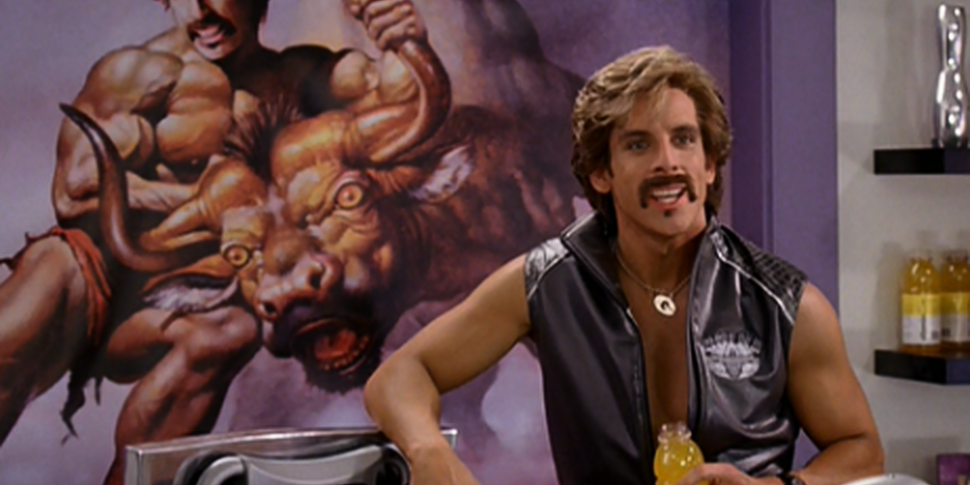With the recent rise in the popularity of fitness and an ever increasing amount of gym-goers, it's sometimes hard to know what training will suit you.
Here's what Ronan has to say on myths like training with a cold and the age old question...does muscle actually weigh more than fat?
Right, Lets bust some myths!!
You’ve been going to the gym / training for a while now and you’ve heard a few things being thrown about that stuck in your head and you’re just not too sure about.
You sent ‘em in, load of them! So we had a go at them.
We’ll just jump straight into it then, shall we?
Are you faster if you don't stretch?
Ok, let’s set this out from the start. Stretching (and mobility) is very important. It’s important that you do it at both the start and end of a workout, but in different formats.
At the start of a workout you’re aiming to warm up the muscles via short, sharp stretches known as /dynamic stretching’ where the hold on a stretch would be no more than 2-3 seconds. This will result in the muscles being warmed up by repetitive friction through stretching and relaxing. This ensures the muscle stays explosive for the workout and doesn’t lose its ability to react fast, when needed.
At the end of the session you want to stretch and hold that stretch for anything up to about 2 minutes. This ensures that the whole muscle group being stretched gets a chance to completely relax, stretch itself out and reverse the build-up of any knots etc… that may have started to take hold during the exercise. It also allows the blood to cover a greater surface area and as such removes toxins such as CO2 and lactic acid more effectively.
So, in summary; short sharp continuous stretches at the start of a session and long slow and prolonged holds at the end of a session.
Is there any use in foam rolling?
Yes, there is a need for foam rolling. However, lately there has been a shift towards combining it with flossing. Flossing is the movement of a muscle through restricted compression. A ‘floss band’ is a stretchy band that you wrap tightly around the muscle you want to target i.e.; the quad and then you stimulate the muscle through a short range of movement to stimulate blood flow and muscle use. The band is then removed and the blood flows in more freely allowing for repair and necessary work to take place on the muscle fibres.
When you foam roll you’re essentially mashing tissue on bone. A poor man’s massage if you will. Foam rolling does have a place, however, but not when there’s a noticeable injury. I would look at it more towards warm up and mobilising the range of movement before a workout.
Does muscle weigh more than fat?
Yes, about 3 times more, on account of it being denser. That was an easy one J
I just started CrossFit and I'm finding I'm definitely way hungrier from it. What is the best way to fuel properly? I'm so confused.
The reason you’re finding yourself a lot hungrier is because the WODs (Workout OF the Day) and programming generally associated with Functional Fitness (one brand of which is CrossFit) are very taxing on the energy systems.
In short, after a workout, your energy systems and nervous system are depleted and need refuelling. Think glycogen (carbs) for the endurance aspect and protein for the muscle repair. After a workout you should be eating a big enough meal consisting of carbs, fats, greens and proteins. This will ensure that any depleted energy is restored for the next session and any necessary repairs that need to be made to the muscles have the relevant supplies.
Before a training session you should look at getting the glycaemic index up through quicker release carbs. Try a chicken sandwich if you’re about 60-90 minutes away from a session or if you don’t have that much time to plan then go even quicker release when you’re inside the 60 minutes from starting and think banana and possibly some yoghurt.
Other than that keep those hands on the bar and smash out 3 more reps than you think you have left..!
How fast do you haven’t to run to outrun a bad diet?
100metres in 7 seconds. If you can’t do that then you’re fighting the tide!
You should stop training when pregnant.
Completely false!
I’ll rephrase the above so it’s a little easier to understand and also explains the situation better…. “You should stop training when pregnant IF advised by your doctor and/or IF the training regime is new to you”. Other than that, keep going with what you’ve been doing all along.
If it ain’t broke, don’t fix it. If your body is comfortable with deadlifts and you’ve been doing them before the pregnancy then keep going unless advised otherwise.
Training with a head cold is ok.
Yup, this is actually ok to do. However, keep in mind that you may not be able to give it 100% due to your body fighting that small infection.
If you find that your breathing, prior to the session, is a bit laboured and wheezy then it’s not in your head anymore and it’s progressed to below the neck. At this point you shouldn’t train as the risk of spreading the infection around the body and making it worse is pretty freakin’ high. Take some time to recover, eat right and hydrate and you’ll be surprised with the strength you have when you come back to it!
The scariest looking dude in the gym is generally the nicest
Actually, I’d be leaning towards true on this one. Try and say hello, you might be pleasantly surprised.
You shouldn’t train on an injury
False. You should train on an injury. Now, before all the abuse comes in, let me explain…
You should train on an injury for the following reasons:
- It encourages blood flow to the injured area
- Use of the injured area encourages mobility
- Other areas will stay ‘up to date’ with the training and not suffer as a result
- Your body learns to not ‘protect’ the injury unnecessarily
Now, when you have an injury and when you start to train on it heed the following, religiously!
- Load the injury lightly. Just enough to stimulate the area without pain. Sometimes bodyweight is enough
- Limit the range of movement to stay out of pain – gradually add to the range of movement as training progresses
- Focus on perfect form and posture throughout to encourage the body to hold the injured area correctly and not ‘protect it’
- Don’t limp consciously and be conscious of subconscious protection i.e.; a sub conscious limp. Force yourself to move properly. (now, say that last sentence fast 10 times!)
I’ve heard the trick for weight loss is to drink black coffee on empty stomach + then run? is this true I’ve never made it out for the run.
By ‘weight loss’ I’m assuming you mean ‘fat loss’…. Fasted training is a thing alright and it does yield some results, but not for everyone. We’re all different and it does depend on the individual. Personally, I hate doing fasted training sessions and I prefer to fuel up a few hours before a session so I’m not going in with a full stomach but I’m not going in with hunger pangs either.
If you’re not sure, give it a shot one day with a meal beforehand and then one without afterwards. You’ll then know which is best for you.
There wouldn’t be a massive difference, however, in the fat loss.
IF you want to burn fat around the body effectively then it’s simple…. Here’s the two points that will do it for you.
-
Eat less calories than your body uses on a daily basis
-
Move more
Anything else other than the above is just a very good and expensive marketing programme!
The body simply cannot lose bodyfat unless it is in a calorie deficit.
There you go, mind blown!
You’re welcome.
Is ‘no pain, no gain’ all a cod?
Pain during training is bad, discomfort (pain’s a very strong word to use) afterwards is generally ok.
Let’s put it in perspective…
After surgery, you’re in pain and your movement is restricted to a bed.
After a tough workout you’re uncomfortable but you’re still able to go about your day – but more slowly and generally with a few more grunts and exhales than usual.
I would argue that the statement is a boiled down version of the above. Basically, it means ‘push yourself out of your comfort zone, within reason, and you’ll feel it in all the right areas the next day’ – but that just wouldn’t sell a t-shirt.
Do weights make you bulk up?
They sure do!
Now, I’ll elaborate for you….
Weights make you bulk up when ALL of the below points are present:
- The weight is enough stimulus for your muscle to struggle against it and as such it tears slightly.
- There are enough reps to cause the tearing to be semi-permanent i.e.; a few days’ worth
- There is enough protein present during and after your workout to repair these tears and as such make them slightly larger
- The exposure to the weights is prolonged over a period of 6-8 weeks at regular intervals i.e.; every 2-3 days
- This is the important one – There is the presence of the muscle building hormone Testosterone in the body.
Now, go through the above list and ask yourself if the 5 points are all ticked when you work out. If they are then you’ve cracked it and you’ll get ‘bulky muscles’. If even 1 of the above points isn’t ticked then you ain't getting ‘bulky muscles’, soz!
I’ve heard that running a marathon is actually terrible for you? Is that true?
No, it’s not true. It’s just false. Running a marathon is very good for you provided you do it in the right way.
Keep in mind that actually running the marathon is the culmination of months and possibly years of hard and focused training. Anyone who attempts one, outside of this training, is insane!
By definition it’s an event that is designed to test the human form to its physical and mental limits.
It requires you to build up all of your joints, tendons, ligaments and muscles relevant to running and that’s not even mentioning the endless cardiovascular training alongside the above.
When people get injured doing a marathon it’s usually down to them taking on too much too soon. If there’s any ‘chink’ in the armour then you’d better believe it that the marathon will expose it and eventually end up in a breakdown of that weakness. Consider a weakened ankle joint. Over 5-10km it would hold up ok due to the muscles around it taking over. Now, completely fatigue those muscles when they’re trying to do their own job and then they haven’t anything left to help out the weakened ankle…. This is when you get your injury!
However, if you do the right training and you take on a marathon with the right attitude and training regime then it’s the opposite and it has enormous benefits for the body.















